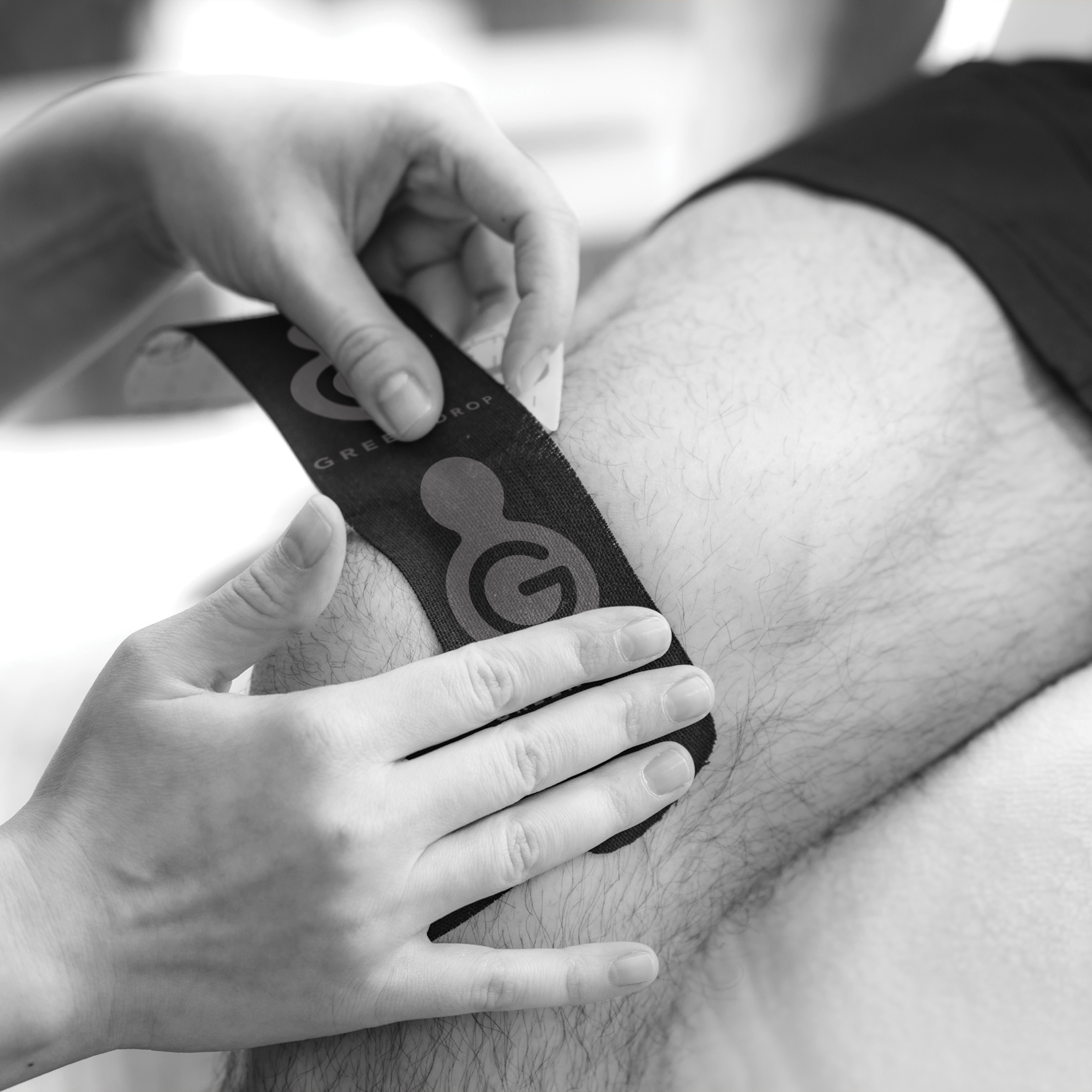When and How to Use Athletic Tape
Minor sprain, strain, or muscle pain? Athletic tape may help. This guide covers the two types of athletic tape — rigid and elastic/kinesio tape — and how to use them.
What is Athletic Tape?
The traditional style of athletic tape is wide and fairly stiff. It’s wrapped around joints, such as ankles and wrists, to keep them in a specific position and prevent injury.
Elastic therapeutic tape (also called kinesiology or kinesio tape) is designed to provide support without restricting movement. It’s stretchy, tough and water-resistant, and can be worn for longer periods of time.
Rather than immobilizing a joint, kinesiology tape gently lifts the skin in a specific area, creating a tiny amount of space between the skin and underlying tissues. Applying the tape has been shown to result in several benefits. It can change your body’s perception of pain, reducing pain at certain trigger points. It can reduce joint irritation by increasing space in problematic joints. And it may also improve circulation of lymphatic fluid and blood flow.


Conditions That May Require Athletic Tape
Before using athletic tape or kinesio tape to treat any pain or medical condition, consult your healthcare provider.
Athletic tape for back sprains and strains: Some people use kinesio tape to relieve back pain.
Athletic tape for neck and shoulder aches: Kinesio tape can lift the skin at trigger points in your upper trapezius and levator scapulae muscles, increasing circulation and relieving pain.
Athletic tape for knee pain: Regular, rigid athletic tape can improve knee stability and help to address patella tracking disorder. Kinesio tape is often used to support the kneecap, helping with patellofemoral pain syndrome (or runner’s knee).
Athletic tape for fingers: Taping fingers together (buddy taping) can immobilize and protect an injured finger. Taping fingers individually (X-taping) can improve grip strength for some athletes.
Athletic tape for sports injuries: Standard athletic tape is used to immobilize or support a joint, helping to prevent injuries or promote healing of a sprain.
Athletic tape for arthritis: Some studies show an improvement in osteoarthritis pain when kinesio tape is applied to the knee or the joint at the base of the thumb.
How to Use Athletic Tape
Traditional athletic tape should be worn only for a short period during athletic activity, then taken off. You may want to wear a softer pre-wrap under the tape to prevent skin irritation.
Kinesio tape may be worn longer, up to 3-5 days. Applying kinesiology tape correctly isn’t as simple as slapping it on. The process involves applying the tape precisely in a certain pattern — such as an X, Y, I, fan or star — with a calibrated amount of stretch. It’s a good idea to consult a physical therapist, sports medicine specialist or other healthcare provider to learn how to use tape correctly.
For the best results when applying kinesiology tape:
- Make sure your skin is clean and free of oils or lotions that can prevent adhesion.
- Don’t apply tape to skin that’s injured, sunburned, or sensitive.
- Remove long hair from the skin before applying the tape.
- The anchored ends of the tape should not stretch.
- After applying the tape to your skin, rub it to activate the adhesive.
- To remove kinesio tape, slowly peel it back (not up) while holding your skin in place. Apply lotion or oil to weaken the adhesive, if needed.

Related Products
Sources
Athletic Taping For Injury Management and Prevention (Spinal & Sports Care)
What Is Kinesiology Tape? (Healthline)
How to Use KT Tape: General Taping Tips for Getting Kinesiology Tape to Stick and Work (KT Tape)
Four Techniques for Knee Taping (Healthline)
Can Kinesio Tape Help with Osteoarthritis? (Cleveland Clinic)

